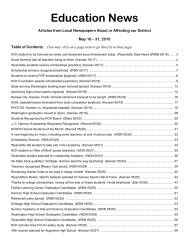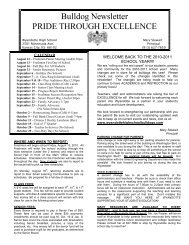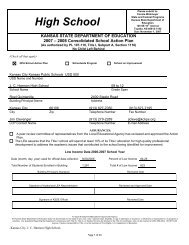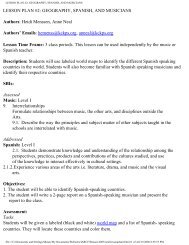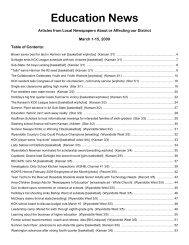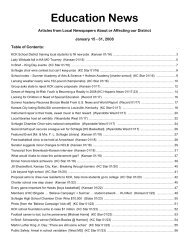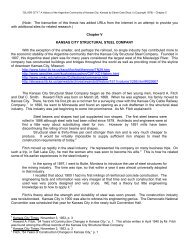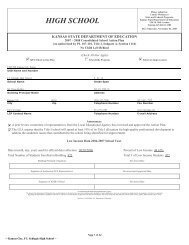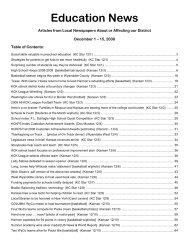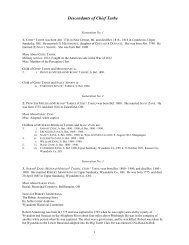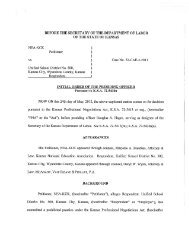Washington - Kansas City, Kansas Public Schools
Washington - Kansas City, Kansas Public Schools
Washington - Kansas City, Kansas Public Schools
Create successful ePaper yourself
Turn your PDF publications into a flip-book with our unique Google optimized e-Paper software.
Part IA. COLLABORATION AND PLANNING<br />
School Leadership Team - Suggestion to include: principal, Instruction coach, teachers, SPED teacher, ELL teacher, counselor, parents,<br />
and community members.<br />
Principal Netzer, Greg S<br />
Instructional Coach(es) Scarlett Sherretts-Risley<br />
Assistant Principal Daniels, Rotier L<br />
Teachers Hamby, Julie A; Johnson, Dane P<br />
Counselor(s) Daly, Catherine M<br />
SPED Mcdonald, Cheryl A<br />
ELL Na<br />
Parents<br />
(One Per Line Please)<br />
Jean Carter<br />
Community Joe Graham<br />
Describe the process used to develop this plan.<br />
We examined the data from our state assessments (math & reading), MAP scores and ACT scores. We saw increases in the<br />
number of students taking the ACT as well as an increase of 1 point. We examined our state assessment data and looked at<br />
trends, patterns, and results of groups of students, as well as areas showed improvement, remained at the same level, and<br />
showed a decrease in student achievement. Some of these areas varied by grade since testing multiple grades was available<br />
for the first time.<br />
Small learning communities met and developed recommendations. Representatives from the SLCs then met and made<br />
further recommendations. Parents and community members also provided recommendations and support. Through study and<br />
dialogue with consultants in the areas of math and reading, even further revisions were implemented.<br />
Discuss the annual evaluation process for all measurable objectives.<br />
Annually, the largest evaluative tools for measuring academic objectives are the <strong>Kansas</strong> Reading Assessment and the <strong>Kansas</strong> Mathematics<br />
Assessments. Prior to these formal assessments, we will measure student progress and instructional emphasis through benchmark<br />
assessments, formative assessments, and the MAP (Reading Goals Survey 6 + KS V2 and Math Goals Survey 6 + KS V2). Each of these<br />
assessments will allow instructors to determine student progress, as well as, determine what, if any, instructional changes need to be<br />
made. Math and English teachers, along with instructional coach and the principal, look at the results of the <strong>Kansas</strong> assessments. Areas<br />
that we did well in are highlighted, so this focus in not lost in the next year, but weak areas are also highlighted. We then identify<br />
weaknesses in our current practices and curriculum and identify how to best address these weaknesses while still teaching within context.<br />
Through the use of benchmark assessments, classroom observations, MAP testing, and scrimmage tests, continual re-evaluation is done to<br />
see how well we are doing on the objectives.<br />
es and the results that they have seen on benchmark assessments, scrimmage tests, and classroom observations of how these practices are<br />
working. Common methods of instruction are shared for the benefit of all.<br />
Data on individual students is looked at and students that are struggling Page 3 with of 50 a concept are identified to receive additional instruction in a<br />
-- <strong>Kansas</strong> <strong>City</strong>, <strong>Washington</strong> High School --



